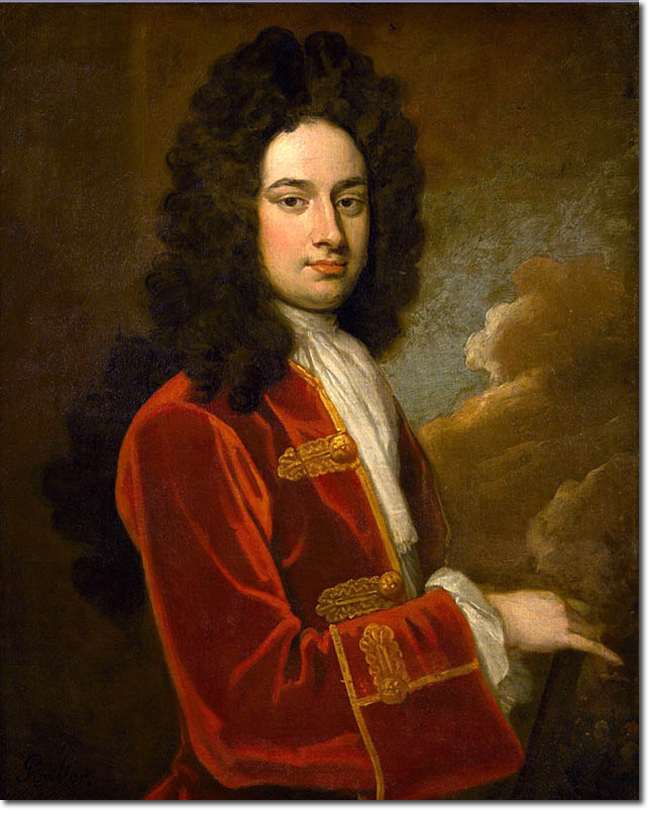|
|

 |
|
James Stanhope was a soldier and politician, born in Paris in 1673. He was educated at Eton and Trinity, Oxford. His father, Alexander Stanhope was the English Ambassador to Spain so he spent much of his youth in Madrid. He served as a volunteer soldier in Italy and Flanders, and in 1695 held a commission in the British Army. In 1705 he was in Spain, serving under Charles Mordaunt, 3rd Earl of Peterborough, at the siege and capture of Barcelona. In 1706 he was a minister, acting as a diplomat and soldier, and in 1708 was put in command of the British army in the Peninsula. He was keen to be more offensively minded than Peterborough and demonstrated this new aggressive policy by taking Minorca. He captured Port Mahon from the Spanish and made it into a winter base for the British fleet. He governed the island for three years until 1711.
After the defeat at Brihuega in 1710 he was a prisoner in Spain for a year and returned to England in August 1712. In 1713 he married Lucy Pitt, the brother of Thomas Pitt who was Colonel of the 3rd Horse (Queen's Bays) and aunt of Pitt the Elder. He gave up the army and entered politics, standing for parliament at Wendover and leading the Whigs in opposition. He helped establish the Hanoverians on the throne and took a prominent part in the suppression of the Jacobites in 1715. In 1717 he was First Lord of the Treasury and Chancellor of the Exchequer. In 1718 he became Earl Stanhope and was in effect the first Prime Minister of Great Britain. He stood out against the expansionist tendencies of Russia, Spain and Austria, and entered into tough negotiations over Gibraltar. These talks broke down and the 13th Siege of Gibraltar ensued. He sent a force to capture Vigo after Spain became involved with the Jacobites. At home he clashed with Walpole and his former Whig colleagues over reform of the House of Lords and his attempts to introduce greater religious tolerance. He was partly responsible for the South Sea Bubble collapse and he was making an impassioned speech in the House of Lords when he suffered a violent headache. He was taken away and died the following day, 5 Feb 1721. The King was shocked and distraught at his death, and ordered a funeral with full military honours. This took place on 17 Feb and the procession went to Southwark. He was buried at Chevening. He and his wife Lucy Pitt had seven children including two sets of twins. |
Armed Forces | Art and Culture | Articles | Biographies | Colonies | Discussion | Glossary | Home | Library | Links | Map Room | Sources and Media | Science and Technology | Search | Student Zone | Timelines | TV & Film | Wargames Library | Search | TV & Film | Wargames
